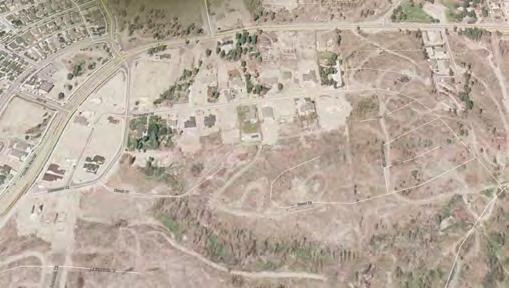4. Loss analysis. We integrate value, hazard, and vulnerability to estimate expected annualized loss (EAL in Figure 8) under as-is and what-if conditions. Then we calculate the present value of future losses (denoted by PVL in Figure 8) under as-is and what-if conditions. The difference between the two is taken as the benefit (B) of the mitigation measure, here meaning the application of the National WUI Guide. Benefits are aggregated from the level of per-house, per-benefit category to the house, community, and national levels, using estimated quantities of houses and people in each mapped hazard level. 5. Decision-making. We use the results of the asset analysis and loss analysis to present decisionmaking information in convenient, meaningful formats, such as benefit-cost ratios (BCR in Figure 8) by archetype, hazard level, community, and nation. One can also present other meaningful quantities, such as jobs created, number of houses lost per year, and number of avoided deaths, non-fatal injuries, and instances of PTSD. Figure 8. General engineering approach to benefit-cost analysis
Define asset(s) as-is and what-if
Hazard analysis: estimate G(x)
Vulnerability analysis: estimate y(x)
Loss analysis: estimate EAL, PVL…
Decisionmaking: estimate BCR…
3.2 Select archetypes This is a modest but pivotal task. Mischief and error creep into studies like this from relying solely on judgment or published sources such as RSMeans to select a single specimen to represent a class. The present project develops cost estimates of a new WUI-resilient home and costs to retrofit an existing home. Archetypes might differ for building new versus retrofitting an existing home. Archetypes are selected as follows. A few sample communities are selected from each hazard level (e.g., as shown in Figure 6). Ideally the sample communities also span the country geographically (in Canada, at least east to west), and in community size according to some authoritative nomenclature. Within each community, one selects sample assets without regard to their size, location, or other attribute, other than requiring that they belong to the asset class in question, which here means single-family dwellings. One identifies attributes that are most likely to strongly influence cost, benefit, or both. In the present case, the project team collects the data listed in Table 2 for each house.
26








